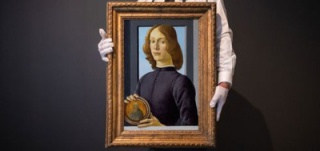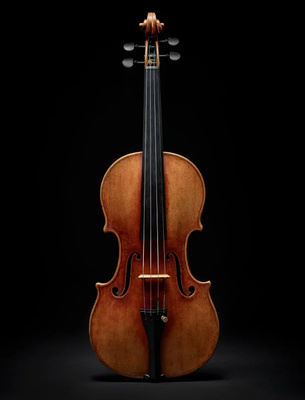Contact us
Paris Ouest (Paris 16ème - Victor Hugo)
Sotheby's International Realty
Sotheby's International Realty
- 95 Avenue Victor Hugo
- 75116 PARIS, France
- +33 1 40 60 50 00
Paris Ouest (Paris 16ème - Auteuil)
Sotheby's International Realty
Sotheby's International Realty
- 50 rue d'Auteuil
- 75016 PARIS, France
- +33 1 56 26 56 55
Paris Ouest (Paris 17ème - Etoile Monceau)
Sotheby's International Realty
Sotheby's International Realty
- 82 Avenue de Wagram
- 75017 PARIS, France
- +33 1 46 22 27 27
Paris Ouest (Neuilly-sur-Seine)
Sotheby's International Realty
Sotheby's International Realty
- Place Sainte Foy - 2 Rue de Chézy
- 92200 NEUILLY, France
- +33 1 41 43 06 46
Paris Ouest (Hauts-de-Seine - Yvelines)
Sotheby's International Realty
Sotheby's International Realty
- Place Sainte Foy - 2 rue de Chézy
- 92200 NEUILLY, France
- +33 1 41 25 00 00
Paris Marais
Sotheby's International Realty
Sotheby's International Realty
- 37-39 rue de Turenne
- 75003 PARIS, France
- +33 1 48 87 14 41
Send an email
- Home
- >
- All news
- >
- Expositions Sotheby’s
- >
- Botticelli in the Florence of Lorenzo the Magnificent
Botticelli in the Florence of Lorenzo the Magnificent
Sotheby's Auction

On January 28, 2020, the works of Sandro Botticelli will be offered at the New York auction, a sale that will be broadcast live.
Alessandro di Mariano di Vanni Filipepi, known as Sandro Botticelli, was born in Florence around 1444 or 1445 and died on May 17, 1510. The works of this painter are marked by the imprint of his link with the de Medici family, which will influence these creations.
First of all, this royal family underwent an important social evolution and quickly achieved great wealth and strong political power. They even obtained the prestigious status of Primus inter pares, however, this title will be highly contested. Botticelli's influence developed notably under Lorenzo the Magnificent, who marked his time with his taste for the arts as well as his great patronage.
The beginnings of the Botticelli era
When Lorenzo obtained his majority in 1469, a joust was organized, a chivalrous tradition that reflected the gentrification of the de Medici family. Thus, a banner was ordered from Botticelli for this event, which once again underlines the closeness between the artist and the family. Another element of this proximity is represented in the painting of the Adoration of the Magi. Indeed, the two sons of the Medici family, Lorenzo and Giuliano are represented, as well as the author of the painting himself.
During a plot on April 26, 1478, Giuliano is murdered, his murderers are tracked down and killed, they are called the pazzi conspirators. Botticelli was therefore given the task of creating various posthumous portraits of Giuliano.
The apogee of Botticelli's career
Botticelli's prestige reached the highest peak of his artistic career in 1480, when he was called by Pope Sixtus IV to decorate the Sistine Chapel with other painters and sculptors. His ambition was to restore Rome to its ancient grandeur, for which he commissioned the construction of the chapel and now its embellishment with paintings and sculptures. The decoration of this chapel had a stake for Botticelli because it fed his connections with affairs outside the Florentines. In particular, he is one of the authors of The Temptation of Christ. He also realized frescoes in the great hall of the Palazzo della Signoria, which were destroyed in the fire of the 19th century.
Botticelli's success today is due to his mythological paintings such as Primavera and The Birth of Venus, which underline his closeness to his patron, Lorenzo the Magnificent, as well as his culture.
His links with other arts
Lorenzo also has an importance in Botticelli's works. At the time, he was the second greatest poet of his time, behind Poliziano. Sandro Botticelli therefore sought to represent the poetry of his patron in his paintings and tries to illustrate his words. Also, from the point of view of the organization of the painting, Botticelli is inspired by the form of poetry to realize his works. Also, a rivalry develops between painters and sculptors, each develops preferences and tries to show the superiority of his art. Botticelli represents in the Calumny d'Apelle sculptures in bronze, once again to show the superiority of painting. This one will represent his last mythological work. Also, Lorenzo commissioned Poggio's villa in Caiano, which represents his taste for classicization because it respects Alberti's theoretical principles. This preference thus influenced Botticelli in his works.
Botticelli embraces religious culture
At the end of his career, Botticelli turned to works that were religious devotional, linked to the preoccupations of the moment such as apocalyptic events. This spirit can be found in the arcane Mystic Nativity or in the illustrated edition of Dante's Divine Comedy.
Find all the informations here.
Alessandro di Mariano di Vanni Filipepi, known as Sandro Botticelli, was born in Florence around 1444 or 1445 and died on May 17, 1510. The works of this painter are marked by the imprint of his link with the de Medici family, which will influence these creations.
First of all, this royal family underwent an important social evolution and quickly achieved great wealth and strong political power. They even obtained the prestigious status of Primus inter pares, however, this title will be highly contested. Botticelli's influence developed notably under Lorenzo the Magnificent, who marked his time with his taste for the arts as well as his great patronage.
The beginnings of the Botticelli era
When Lorenzo obtained his majority in 1469, a joust was organized, a chivalrous tradition that reflected the gentrification of the de Medici family. Thus, a banner was ordered from Botticelli for this event, which once again underlines the closeness between the artist and the family. Another element of this proximity is represented in the painting of the Adoration of the Magi. Indeed, the two sons of the Medici family, Lorenzo and Giuliano are represented, as well as the author of the painting himself.
During a plot on April 26, 1478, Giuliano is murdered, his murderers are tracked down and killed, they are called the pazzi conspirators. Botticelli was therefore given the task of creating various posthumous portraits of Giuliano.
The apogee of Botticelli's career
Botticelli's prestige reached the highest peak of his artistic career in 1480, when he was called by Pope Sixtus IV to decorate the Sistine Chapel with other painters and sculptors. His ambition was to restore Rome to its ancient grandeur, for which he commissioned the construction of the chapel and now its embellishment with paintings and sculptures. The decoration of this chapel had a stake for Botticelli because it fed his connections with affairs outside the Florentines. In particular, he is one of the authors of The Temptation of Christ. He also realized frescoes in the great hall of the Palazzo della Signoria, which were destroyed in the fire of the 19th century.
Botticelli's success today is due to his mythological paintings such as Primavera and The Birth of Venus, which underline his closeness to his patron, Lorenzo the Magnificent, as well as his culture.
His links with other arts
Lorenzo also has an importance in Botticelli's works. At the time, he was the second greatest poet of his time, behind Poliziano. Sandro Botticelli therefore sought to represent the poetry of his patron in his paintings and tries to illustrate his words. Also, from the point of view of the organization of the painting, Botticelli is inspired by the form of poetry to realize his works. Also, a rivalry develops between painters and sculptors, each develops preferences and tries to show the superiority of his art. Botticelli represents in the Calumny d'Apelle sculptures in bronze, once again to show the superiority of painting. This one will represent his last mythological work. Also, Lorenzo commissioned Poggio's villa in Caiano, which represents his taste for classicization because it respects Alberti's theoretical principles. This preference thus influenced Botticelli in his works.
Botticelli embraces religious culture
At the end of his career, Botticelli turned to works that were religious devotional, linked to the preoccupations of the moment such as apocalyptic events. This spirit can be found in the arcane Mystic Nativity or in the illustrated edition of Dante's Divine Comedy.
Find all the informations here.
The latest articles







